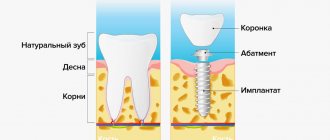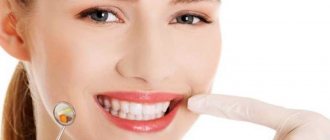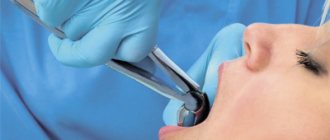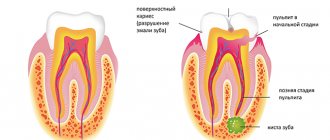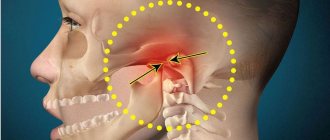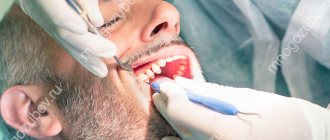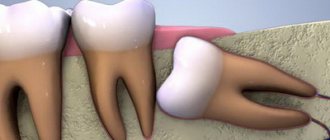.
A huge number of people are afraid to visit dentists because dental treatment is usually accompanied by pain and other unpleasant sensations. There is even a special term - dentophobia - fear of dentists, which, according to some data, can describe 84% of patients. However, nowadays, anesthesia comes to the aid of dental phobes, facilitating a calm dental procedure.
Anesthesia in dentistry is good. that she exists!
But people are usually concerned about how long the freezing effect lasts and how to quickly recover from dental anesthesia, because it can interfere with eating or distort your smile.
Methods for quickly removing frozen teeth
A huge number of people are afraid to visit dentists because dental treatment is usually accompanied by pain and other unpleasant sensations. There is even a special term - dentophobia - fear of dentists, which, according to some data, can describe 84% of patients. However, nowadays, anesthesia comes to the aid of dental phobes, facilitating a calm dental procedure.
Anesthesia in dentistry is good. that she exists!
But people are usually concerned about how long the freezing effect lasts and how to quickly recover from dental anesthesia, because it can interfere with eating or distort your smile.
Expert opinion
Roman Borisovich Alekperov
orthopedic dentist
Experience: 24 years
As a rule, an allergic reaction does not always occur immediately after the installation of a crown or prosthesis. It can appear even after several years of use. It happens that when altering old structures with new ones, a reaction such as burning and swelling of the gums occurs. It seems that a person wore metal-ceramic crowns or a prosthesis for many years, got new ones, and six months later severe allergic manifestations began. Of course, to prevent such a development of events, it would be good to check with an allergist before getting prosthetics and take tests for sensitivity to dental materials. And then, new teeth, a new smile will give you pleasure, and not a headache and searching for the cause of poor health all your life. If you have the financial opportunity, it is better to immediately install crowns or prostheses made of zirconium dioxide. Hypoallergenic material. Take care of yourself and be healthy!
Classification of anesthesia in dentistry
Anesthesia, or anesthesia, in dentistry has a certain classification. Various drugs and their types are used in individual cases, depending on the time required by the doctor for the operation, the patient’s condition, and the presence of severe fear or phobia. First of all, anesthesia is divided into two types:
- general anesthesia, or anesthesia;
- local anesthesia.
Anesthesia in dentistry is used only in 8% of cases
Anesthesia is usually used only in isolated cases of necessity, if the operation is expected to be very long. So, general anesthesia can last about six hours. Moreover, it has a number of advantages relative to local anesthesia:
- you can remove several teeth or perform several procedures in one go;
- Treatment under general anesthesia is completely painless;
- During anesthesia, the secretion of saliva is blocked, which is very beneficial to the doctor.
However, in most cases there is simply no need for anesthesia, so local anesthesia is used, which is often popularly called tooth freezing.
The dentist recommends it at the appointment!
By eliminating all three risk factors and choosing the right freezing, you can feel blissful at the dentist. After all, DENTISTRY WITHOUT PAIN is the same reality as this publication on the DENTIST AT AN APPOINTMENT website. Happy Freezing!
* * *
Do you agree?
Anesthesia for dental treatment is a necessary stage of the procedure, facilitating the doctor’s work and reducing negative feelings and fear in the patient. Tooth freezing is a colloquial term for anesthetizing or numbing a tooth. There is no need to remember how afraid many people are to go to the dentist, especially for the first time.
Features of local anesthesia
Local anesthesia is simple and in most cases can satisfy the need for pain relief, which is why it is especially popular among dentists. In turn, tooth freezing is divided into the following types:
Application anesthesia
It is carried out using gels or sprays that are applied to the gum or cheek. The effect can be observed approximately five minutes after application. However, topical anesthesia is used only in cases where it is necessary to get rid of tartar, remove a falling out or loose tooth, treat gums, or carry out another practically painless procedure, because the spray or gel freezes only the surface of the mucous membrane.
Application anesthesia - freezing the tooth by spraying an anesthetic
Moreover, topical anesthesia cannot be used for children under five years of age, as well as people with lung diseases.
Infiltration anesthesia, or injection
This type of anesthesia is performed by injecting an anesthetic into the soft tissue located near the diseased tooth to freeze it. It affects the deep layers of tissue. The injection is administered near the location of the entrance of the nerve trunks leading to half of the jaw or its separate part. Usually, not only the cheek and the necessary gums are frozen, but also other organs of the oral cavity, since the exits of all nerves are located close to each other.
Injection anesthesia - injecting medication into the desired location
It is also important to understand that freezing the upper and lower jaws are somewhat different in their methodology and action due to differences in the structure of the skeleton. Considering that the lower jaw usually has greater loads relative to the upper jaw, evolutionarily it has developed that it has a more dense structure and its muscles are more developed.
Computer anesthesia is the most effective
Therefore, when injecting an anesthetic into the lower jaw, the needle is inserted deeper, which also affects the duration of the anesthetic.
Removing baby teeth
Milk teeth that can no longer be cured, but they provoke the development of acute inflammation of the bone or periosteum, must be removed. Which method to use will depend on the specific situation.
For example, the milk tooth being removed is already well loosened and the pain when pulled out will be minimal. In this case, the doctor may advise putting on an application, gel or aerosol.
Lidocaine aerosol is used quite often. There are 3 mg per 1 kg of body weight. For children, it is better to apply this substance using a cotton swab.
For more serious dental problems, children are given infiltration anesthesia. Lidocaine, Ubistezin Forte and similar medications are used. Two injections are made - from the gum and from the tongue.
Children tolerate these painkillers well. But before using them, it is necessary to undergo tests to identify allergens. It is also worth clarifying whether the child has problems with the cardiovascular system.
Duration of action of the anesthetic
A huge number of patients are usually interested in how quickly tooth frost will go away, but it is necessary to understand that the duration of action of the anesthetic depends not only on the type of anesthesia, the area of its application, dosage, the person’s age, metabolic rate and other individual parameters, but also on the painkiller used facilities. Thus, dental anesthetics can be divided into three groups according to the duration of their effect:
- short-acting (Novocaine) – up to twenty minutes;
- medium-acting (Prilocaine, Articaine, Trimecaine, Lidocaine) - from half an hour to an hour;
- long-acting (Bupivacaine) - the effect in some cases can last up to six hours, but usually a sensitivity-blocking dosage is used for two hours.
Local anesthetics
However, as mentioned above, there are a number of factors that influence the duration of action of the painkiller:
- the presence of inflammation at the site of drug administration;
- the presence of vasoconstrictors in the composition of the anesthetic - substances that narrow blood vessels;
- injection depth;
- site of drug administration;
- chronic diseases of the urinary system;
- individual parameters of the human body.
But in most cases, drugs when injected into the upper jaw last for the next two hours, and when injected into the lower jaw - up to four. However, again, this all depends on the freezing method and many other factors, so if the anesthesia persists for a longer period of time, there is no cause for concern.
If the freezing does not go away, you should consult a doctor.
Only if freezing remains relevant even after 24 hours should you consult your doctor.
Features and types of anesthetics
All medications are divided according to how long they last. There are short-acting, long-acting or medium-acting remedies. In district clinics, older generation drugs are often used, for example, novocaine or lidocaine.
Novocaine is used for anesthesia
Modern drugs are used in private offices and clinics. They are produced in capsules - reservoirs into which a syringe is inserted. Such injections are painless, and all thanks to the fact that the needle is thin.
In addition, the drug does not come into contact with air, which means everything happens in complete sterility. Another plus is the exact dosage. New anesthetics used in such institutions are melivacaine and articaine.
Articaine series
Articaine is a new and frequently used remedy in private clinics. It is produced under many names and contains many substances, so you can select the right remedy for different patients.
It is customary to supplement Articaine with norepinephrine or adrenaline, after which the drug begins to have vasoconstrictor properties. Excess blood loss is eliminated, and the patient experiences minimal discomfort.
Modern medicine
Compared to lidocaine or novocaine, Articaine is several times more effective. With the correct dosage, it is possible to treat even those patients who have endocrine problems, as well as pregnant women and nursing mothers.
Mepivacaines
Drugs from this series are produced under different names, the most famous drug is Scandonest. Adrenaline is used as a supplement, which is why the effectiveness is slightly less than that of articaine.
The substance mepivacaine has a unique property - it narrows blood vessels. More often used to treat pregnant women, heart patients, and children.
Method for reducing the effect of anesthesia
Usually, even after an operation or a procedure requiring anesthesia, the painkiller continues to make itself felt: the lips remain numb, it is not possible to eat normally, the smile becomes distorted. Therefore, people are looking for a way to help the anesthetic stop working as quickly as possible.
A warm compress helps quickly remove frost.
In this case, dentists usually recommend applying warm compresses to the cheek. This will help dilate the blood vessels, which will ultimately increase the metabolic rate and remove the anesthetic from the body. However, this is contraindicated after tooth extraction or if inflammation remains. Thus, it is strictly forbidden to heat a tooth or cheek during gumboil. Therefore, it is highly recommended that you consult your dentist initially.
If there is swelling, compresses should not be applied.
Eating after removal
It is not recommended to eat salty and spicy foods after tooth extraction. They irritate the mucous membrane and increase pain. Consuming hot food and drinks can cause bleeding and increase swelling.
Many people have been afraid to eat ice cream for a long time, claiming that they will catch a cold. Cold food has no effect on this. This problem can be caused by general hypothermia of the body or a draft. The main thing is to eat the ice cream slowly and not bite into large pieces. This delicacy is even recommended, because it forces the blood vessels to constrict, which means that there is no risk of bleeding.
Category: Tooth extraction Published by Mister stomatolog
Anesthesia during pregnancy
Typically, dentists recommend treating teeth and gums while planning pregnancy, because anesthetics can indirectly affect the intrauterine development of the fetus. However, if necessary, it is better to go to the doctor in the second trimester of pregnancy, but if there is an urgent need for treatment, then it can be performed at any stage.
Dental treatment during pregnancy is completely safe
The most modern painkillers, which do not contain adrenaline, are used for pregnant women to avoid the possibility of increased blood pressure and contractions of the uterus. Usually, drugs with minimal toxic effects on the body are also used.
In some cases, pregnant women are transferred to a hospital for treatment.
Thus, all necessary procedures can be carried out under the strict supervision of the attending physician to avoid any complications.
Questions and answers
I am registered for implantation of BOI implants with KOS and BCS systems at Proletarskaya - what medications will be used?
Good afternoon. I have an appointment for implantation at Proletarskaya with BOI implants with the KOS and BCS systems. To carry out the operation, I need to undergo allergy diagnostics. What anesthetic medications will I use to properly identify possible allergens?
Hello!
When performing dental implantation, our clinics use the anesthetics Ubistezin and Ultracain. If you require additional information, we recommend that you consult your physician. Sincerely, SIMPLADENT Patient Support Center + + 8-800-333-53-41 Other questions
Tooth freezing while breastfeeding
Some mothers are afraid to visit dentists while breastfeeding, thinking that anesthetics through milk can have a negative effect on their children. However, there is practically no reason for this.
When injected, the anesthetic does not enter the bloodstream.
Neither the anesthetic itself nor the accompanying possible toxic substances are reflected in the milk, because they act only on a certain area of the jaw and are not introduced into the blood.
But in order to further reduce the likelihood of negative effects of drugs on babies, dentists recommend feeding them before visiting the doctor, and also preparing in advance the required amount of milk for the next feeding of the baby. Thus, the toxic substance will not have the opportunity to enter the child’s body.
How to help with allergies?
What should you do if you encounter such manifestations in the oral cavity? If your allergy symptoms are severe, you should take an ambulance - an antihistamine (suprastin, zodak, etc.). And then according to plan.
First, see your dentist and find out the reason why this happened. Perhaps a specialist will suggest:
- elimination test - will remove the prosthesis, crown for 1-7 days
- exposure test - after the negative symptoms disappear, he will install the structure back and monitor the progress of the condition.
Secondly, visit an allergist and take tests, allergy tests for a reaction to dental material. Then, based on the research results, it is necessary to change the designs to those prostheses that will not cause an allergic reaction.
How to speed up the restoration of sensitivity and relieve unpleasant symptoms after anesthesia
Pain sensitivity protects the body from damage. So, a person will quickly withdraw his hand from the fire, preventing a burn, take off his rubbing shoes and not walk barefoot on the fragments. But often, in order to heal the body, it also needs to be hurt. Nature does not provide for a person to be able to send an impulse to pain receptors, turning off sensitivity when tissue integrity is violated for the good. The human brain figured out how to solve this problem, and anesthesia appeared - temporarily turning off sensitivity with the help of drugs.
A person does not have the ability to control pain, so anesthetics come to the rescue
But if during the operation the absence of sensitivity is a positive thing, then after it, as a rule, every person wants to quickly restore the normal state of the tissues, especially since the postoperative period is often accompanied by unpleasant symptoms: tingling, a crawling sensation. The most severe discomfort occurs after dental treatment and other manipulations in the oral cavity, since a person cannot speak, eat and drink normally for several hours.
Basic requirements for modern anesthetics
An anesthetic is a unique substance that suppresses the excitability of the receptor, turns off the impulse to the patient’s nerve fibers, after which pain relief occurs.
The anesthetic has basic requirements:
- do not cause dilation of the patient’s blood vessels;
- do not provoke tissue irritation;
- high resistance to sterilization of the drug;
- slow absorption into the blood;
- greater strength and duration of analgesic effect;
- have low toxicity to the patient;
- good analgesic effect during dental treatment.
The local anesthetic has a direct inhibitory effect on the receptor and the permeability of the sodium channels in the patient begins to decrease, while the entry of sodium into the human cell is completely disrupted, after which an action potential is generated and this all leads to a lack of sensitivity and analgesia during treatment. Sensitivity is switched off one by one: at the beginning pain, then taste, then temperature and finally tactile. This is how the process of pain relief occurs.
To prolong the effect of painless treatment, a vasoconstrictor (for example, adrenaline) must be added to the local anesthetic. However, in patients with heart disease, it poses a greater risk of heart attack. A vasoconstrictor can cause the patient to relax the muscles of the bronchi and intestines, dilate the pupils, significantly increase blood sugar, increase tissue metabolism and cause many adverse reactions. But if you exclude adrenaline from the local anesthetic drug, this will lead to ineffectiveness and the patient will not experience pain relief.
The decision to use this substance in treatment should be made by an experienced dentist, as a last resort. After all, after adding adrenaline to the local anesthetic, the effectiveness of anesthesia itself during dental treatment increases significantly and its toxicity for the patient decreases. This occurs due to the very slow absorption of the painkiller into the blood. And sometimes toxic complications that appear during local anesthesia are mistakenly attributed to a side effect of the substance adrenaline.
What determines the duration of anesthesia?
During anesthesia, the anesthetic acts locally: on the surface of the mucous membrane and skin with the application method and on the area of soft tissue and bone structures with the infiltration and conduction method. The anesthetic disrupts the release of hydrogen atoms in the nerve endings and in this way blocks the transmission of nerve impulses, including pain, to the brain.
The duration of the blockade depends directly on the drug itself: its pharmacodynamics - the ability to be metabolized by the body. Anesthesia wears off when the anesthetic is gradually released into the bloodstream, inactivated by the body (by plasma cell enzymes and the liver) and excreted by the kidneys. The elimination time depends on the chemical properties of the drug itself and on the individual characteristics of the human body.
So, on average, the half-life of Novocaine is 30 - 50 seconds, so its anesthetic effect is short-lived and lasts no more than one hour, Lidocaine acts twice as long, and the use of Articaine neutralizes tissue sensitivity for a period of two to four hours.
The rate at which drugs are eliminated depends on the patient's health status.
From the side of the human body, the time of anesthesia can be influenced by:
- Blood flow in the anesthesia zone. The more abundant the network of blood vessels, the faster the freeze will go away.
- Condition of the liver and kidneys. In diseases of these organs, the utilization and elimination of drugs is difficult, so they will remain in the body longer, providing not only a local, but also a systemic effect.
- Patient's emotional state. If a person experiences strong fear before the procedure, the body produces a large amount of adrenaline, which helps to prolong the duration of anesthesia.
- Dietary considerations on the eve of surgery. Drinking alcohol, fatty foods, grapefruits, overeating, taking certain medications (paracetamol, ibuprofen and others) can make the liver work less efficiently and, accordingly, slow down the utilization of the anesthetic.
Basic painkillers
Not any anesthesia can be used when extracting a tooth. In dentistry, only the most common and effective medications are used. And almost every hospital has Novocaine.
But in modern treatment, novocaine is used much less frequently. If previously not a single operation could be done without it, now this drug causes an allergic reaction in most people. It has a number of side effects:
- dizziness;
- lethargy;
- lowering blood pressure.
Today there are more intense anesthetics, and therefore novocaine is used only in combination. It is injected into the body with a small dose of adrenaline. In combination, these drugs have the best analgesic functions. But such a mixture should not be prescribed to people whose blood pressure is off the charts.
For infiltration anesthesia, a 0.5% lidocaine solution is used. This drug can be used for the conduction method; only a 1–2% solution is required. For an adult, the norm is 300–400 mg. Side effects of this medicine include:
- headache;
- fatigue;
- loss of sensation in the lips and tongue;
- heart rhythm is disturbed;
- blood pressure decreases;
- there may be hives.
The most modern anesthesia is a medicine based on the substance articaine. Such drugs can provide long-term and reliable pain relief. It is used by a large number of dental surgeons. The substance reaches its maximum effect after 10 minutes and maintains its result for 1–3.5 hours. But no matter how good the drug is, it always has side effects:
- muscle twitching;
- headache;
- tremor;
- nausea;
- vomiting reflex;
- diarrhea.
These are the most common side effects. But sometimes others happen:
- blood pressure decreases;
- cardiac arrhythmia is disturbed;
- rashes appear on the skin;
- angioedema may occur.
These painkillers cannot be used for meningitis, tumors, osteochondrosis, spondylitis, tuberculosis, metastatic lesions of the spine, heart failure, tumors in the abdominal area, severe arterial hypotension, and hemostasis disorders.
Use with caution during pregnancy. The drug may cause a decrease in the fetal heart rate.
A very good drug based on articaine is Ubistezin. It also contains adrenaline. It reduces blood vessels in the area where anesthesia was administered. This makes it difficult to absorb the substance. As a result, the analgesic effect begins to act within 3 minutes. In addition to the above listed side effects that drugs based on articaine have, Ubistezin also adds the likelihood of an ischemic zone in the area where anesthesia was administered. This occurs if a blood vessel has been hit or a nerve has been damaged.
What measures can be taken to make the anesthesia go faster?
In order for sensitivity to recover faster after dental analgesia, you should refrain from drinking alcohol and fatty foods one to two days before dental treatment. On the day of the procedure, you should not take medications without a doctor’s prescription. If the anxiety and fear of going to the dentist are significant, you can take a sedative (drink tea with lemon balm, valerian extract or another drug that is sold at the pharmacy without a prescription).
If the patient is worried before surgery and anesthesia, he is recommended soothing teas and mixtures
If infiltration anesthesia was performed for a simple treatment of a front tooth (caries, grinding a tooth before prosthetics, teeth whitening), warm drinks will help speed up the recovery process, as well as a light massage in the numb area.
You cannot massage or heat the pain relief area after surgical operations, including after tooth extraction, after surgical treatment of inflammatory and infectious processes, as well as after conduction anesthesia on the lower jaw.
Such actions can lead to the spread of the infectious process, increased bleeding in the wound, disrupt the formation of a blood clot after tooth extraction, and cause failure of the postoperative suture.
Allergies from dentures - myth or reality?
Prosthetics are an excellent chance to restore lost teeth or correct aesthetic defects. There are contraindications for installing crowns and dentures. These include allergic reactions of the patient to the dental material used.
Denture allergies are not a myth. The problem is urgent and becoming quite global; a generation is growing with a reduced or incorrect, atopic response of the human immune system.
Allergic reactions very often occur to artificial crowns that are in the mouth. They mainly react to products made of metal, metal-ceramics, or more precisely, to one of the components of the alloy.
What to do to make the freeze go away faster
Foods such as meat, fruits and vegetables spoil very quickly, especially when they are not frozen correctly. With every day of improper freezing, products lose quality, and bacteria, on the contrary, willingly multiply in such a favorable environment. We need to ensure that products that we do not use immediately retain as many nutrients and vitamins as possible immediately after purchase. When frozen, dishes have a long shelf life, even up to a year. How long can you store your own frozen food, how to freeze it correctly, and what should you worry about when defrosting? If store-bought frozen foods need to be stored according to the instructions on the package, much less is known about food frozen on your own. No problem, we will help you understand the issues of freezing at home! General principles of freezing The main condition for freezing at home is the unconditional freshness of the food. The longer a product is in the freezer, the more quality it loses. It's best to decide immediately after purchasing what foods you need to freeze. As soon as the product goes through the process of preparing for freezing (it is washed, dried, cut into pieces, blanched, or already boiled), it must be placed in small portions in freezer-safe containers or special bags that do not allow air and moisture to pass through. To protect products from loss of vitamins and protect them from chapping during freezing, you should try to leave as little air as possible in the packaging. In any case, you should not fill freezer containers completely, as frozen food may swell and lift the lid. Just as for purchased frozen products, for home-made products, labeling in the form of a sticker with basic information about the product is important. There should be a date on which the product was frozen, an approximate shelf life, and sometimes a designation of the contents. Suitable stickers can be purchased at a stationery store. It is important to freeze food as quickly as possible to prevent natural aging processes. Some freezers have a so-called “shock” freezing function, and the weight of the food should not exceed 1 kg. If you freeze too many foods at once, the process will take a long time and the food will lose its quality. It is very important to place foods to be frozen on a flat surface in the freezer, and not immediately put them in bags or containers, so they will freeze evenly. We provide a short overview of the shelf life of frozen foods (at an optimal storage temperature of -18°C): • Vegetables: 3 -12 months • Greens: 3 – 4 months • Fruits: 9 – 12 months • Meat/fish: 3 – 12 months • Sausage, frankfurters: 1 – 6 months • Flour products: 1 – 3 months • Dairy products: 2 – 6 months • Ready meals: 1 – 3 months To preserve vitamins in frozen foods, you need to be able to defrost them slowly and gently. Many products, when still frozen, get into a hot frying pan or pan, lose their taste and their consistency changes. Only some types of vegetables, such as spinach, can withstand “shock” defrosting; delicate berries, such as raspberries, turn into porridge when quickly cooked. It is best to remove meat, fish and especially delicate foods from the freezer in the evening and thaw them in the refrigerator, since bacteria multiply very quickly after freezing at high temperatures. Raw food that has already been thawed should not be frozen a second time - since the number of bacteria increases significantly and the product can quickly spoil. If a frozen product is cooked after defrosting, then in this form it can be re-frozen, the main thing is that this happens quickly.
What is freeze chapping? Freeze chaffing occurs when food is frozen with too much oxygen or when frozen food packaging leaks air. Damaged areas of the product dry out and become whitish-grayish in color. This occurs when the temperature in the freezer drops, causing water on the surface of the food to evaporate. Weathering during freezing spoils products and impairs their taste. It is better not to eat weathered foods at all. You can prevent chapping by tightly closing bags and containers, or freezing them in vacuum packaging. Freezing vegetables and herbs Fresh vegetables can be stored in the refrigerator for several days, although this can lead to loss of vitamins and taste. To freeze vegetables better, you need to carefully prepare them and freeze them immediately after purchase, without storing them. Thus, numerous minerals and vitamins are preserved, and microorganisms will no longer be able to multiply, while the structure and aroma of vegetables are preserved, and the aging process is stopped. Basically all vegetables (except cucumbers) can be frozen raw. In many cases, it is still better to blanch vegetables to reduce the activity of enzymes that are responsible for changing color and taste. Vegetables must first be washed, cut into pieces (disassemble cauliflower into inflorescences) and blanched in salted water for 2-4 minutes, depending on the type. Then cool in ice water, dry well and freeze. It is best to take small portions, then the freezing process will take less time. The faster the freezing, the smaller the ice crystals are formed in the cell walls of the product and thus the latter remain intact. There are several ways to freeze fresh herbs. The greens need to be kept in water for some time before freezing to wash off the dirt. Then you can either chop it finely, put it in ice trays and fill it with water, or pack it whole into freezer bags. Freezing fruits and berries Fruits are easy to freeze. Although it is better not to take whole unpeeled fruits for freezing. For example, rhubarb, apricots and other similar fruits need to be washed, peeled and frozen into pieces. If you want to prepare dishes with fruit in winter, frozen ones will come in handy. If the fruit contains too much juice, it may turn into mush after freezing. Here we can only advise one thing - to make puree from such thawed fruits. Freeze potatoes, rice and pasta Potatoes, rice and pasta taste much better when freshly prepared. Of course, you can store the leftovers of such dishes in the refrigerator, freeze them, but when thawed, especially potatoes are not so tasty. Due to the starch contained in potatoes, rice and pasta, the consistency and taste change when frozen. Raw potatoes generally become watery because their cell structure changes when frozen. But already cooked potatoes (fries, croquettes or wedges) tolerate freezing well. Pasta becomes softer after thawing, and rice with a high starch content can change the taste. As a matter of fact, everyone decides for themselves whether to freeze these products...
Freezing meat and fish Meat and fish freeze perfectly if you follow a couple of rules. Fresh meat should be quickly dried, placed in airtight packaging and frozen. It is best to freeze meat and fish in vacuum packaging, although this is not easy at home. It is important to freeze in small portions (spread the minced meat in a thin layer), this way the meat and fish freeze faster and the growth of bacteria stops. It is best to remove the meat from the freezer in the evening and defrost it in the refrigerator. Attention: defrosted meat cannot be re-frozen! When the meat has thawed a little, it is easy to cut, but you need to fry it when it is at room temperature, otherwise it will release too much water and it will cook rather than fry. Before freezing, the fish must be cleaned, rinsed and dried; you can also dip the fillet in salted water before putting it in the freezer, this will form a protective layer that will prevent it from getting chapped. Freezing flour products Bread, buns, pancakes, dumplings and dumplings can be frozen without problems. You just need to make sure that no air gets into the bags with these products, and the bread can be cut into pieces. The fresher the cotton products are before freezing, the tastier they are after thawing. Frozen bread and rolls can be placed in a preheated oven, greased with water or milk first, this will form a delicious crust on them, and they will defrost inside! Pancakes can be frozen with or without filling, but already prepared, and then from the freezer they need to be placed directly into a heated frying pan without defrosting first. Dumplings and dumplings are frozen raw, and then, while still frozen, they are boiled in boiling salted water until tender. Freezing dairy products, eggs, cheese Milk, cream, yogurt and whole eggs are not suitable for freezing, but dairy products such as butter and cheese tolerate cold well. Hard cheese can be frozen as a whole piece or in grated form. But soft cheese and cottage cheese can become too watery due to their high liquid content. The yolk and white can only be frozen when separated.
Freezing ready-made meals Of course, you can freeze ready-made meals when cooking at home. There are, however, some dishes that do not freeze very well, such as boiled potatoes or gravies and sauces with a lot of cream, since they can separate. It is better to freeze vegetables and meat with sauces separately. The dish must first be quickly cooled to room temperature, divided into small portions and frozen in tightly closed containers. Ready-made meals do not need to be defrosted first, but immediately reheated from frozen. Freeze wisely and enjoy!

